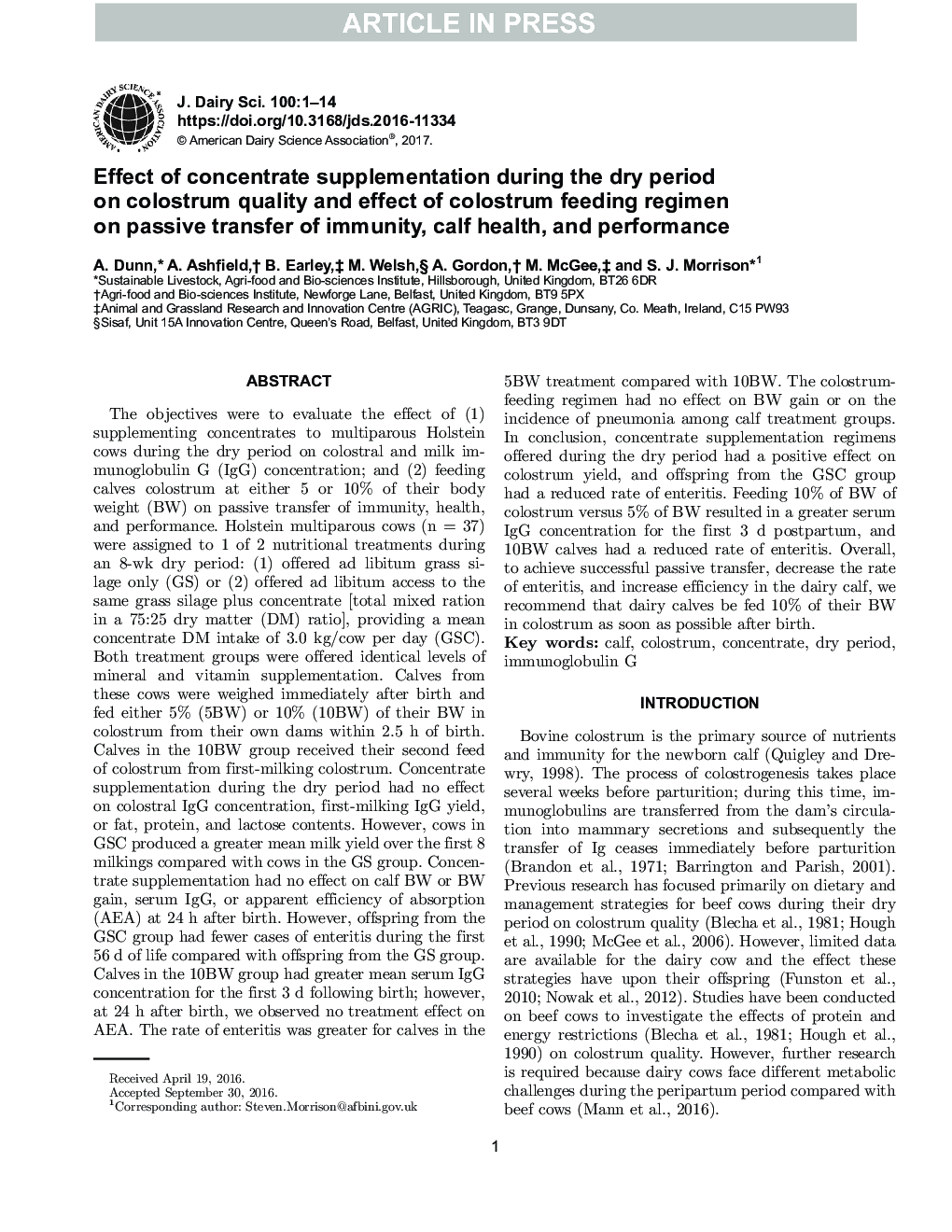| Article ID | Journal | Published Year | Pages | File Type |
|---|---|---|---|---|
| 5542575 | Journal of Dairy Science | 2017 | 14 Pages |
Abstract
The objectives were to evaluate the effect of (1) supplementing concentrates to multiparous Holstein cows during the dry period on colostral and milk immunoglobulin G (IgG) concentration; and (2) feeding calves colostrum at either 5 or 10% of their body weight (BW) on passive transfer of immunity, health, and performance. Holstein multiparous cows (n = 37) were assigned to 1 of 2 nutritional treatments during an 8-wk dry period: (1) offered ad libitum grass silage only (GS) or (2) offered ad libitum access to the same grass silage plus concentrate [total mixed ration in a 75:25 dry matter (DM) ratio], providing a mean concentrate DM intake of 3.0 kg/cow per day (GSC). Both treatment groups were offered identical levels of mineral and vitamin supplementation. Calves from these cows were weighed immediately after birth and fed either 5% (5BW) or 10% (10BW) of their BW in colostrum from their own dams within 2.5 h of birth. Calves in the 10BW group received their second feed of colostrum from first-milking colostrum. Concentrate supplementation during the dry period had no effect on colostral IgG concentration, first-milking IgG yield, or fat, protein, and lactose contents. However, cows in GSC produced a greater mean milk yield over the first 8 milkings compared with cows in the GS group. Concentrate supplementation had no effect on calf BW or BW gain, serum IgG, or apparent efficiency of absorption (AEA) at 24 h after birth. However, offspring from the GSC group had fewer cases of enteritis during the first 56 d of life compared with offspring from the GS group. Calves in the 10BW group had greater mean serum IgG concentration for the first 3 d following birth; however, at 24 h after birth, we observed no treatment effect on AEA. The rate of enteritis was greater for calves in the 5BW treatment compared with 10BW. The colostrum-feeding regimen had no effect on BW gain or on the incidence of pneumonia among calf treatment groups. In conclusion, concentrate supplementation regimens offered during the dry period had a positive effect on colostrum yield, and offspring from the GSC group had a reduced rate of enteritis. Feeding 10% of BW of colostrum versus 5% of BW resulted in a greater serum IgG concentration for the first 3 d postpartum, and 10BW calves had a reduced rate of enteritis. Overall, to achieve successful passive transfer, decrease the rate of enteritis, and increase efficiency in the dairy calf, we recommend that dairy calves be fed 10% of their BW in colostrum as soon as possible after birth.
Related Topics
Life Sciences
Agricultural and Biological Sciences
Animal Science and Zoology
Authors
A. Dunn, A. Ashfield, B. Earley, M. Welsh, A. Gordon, M. McGee, S.J. Morrison,
